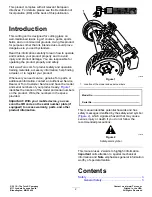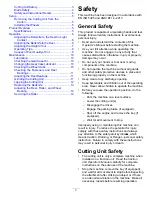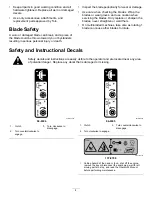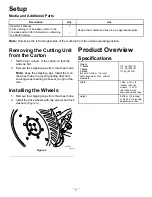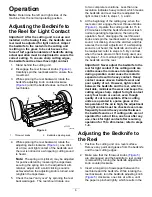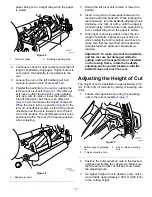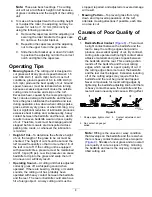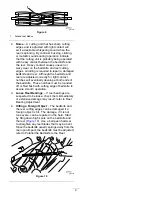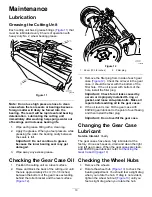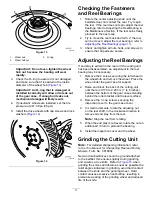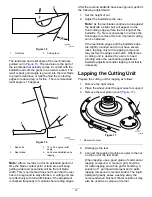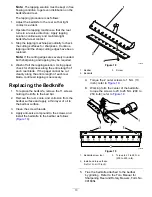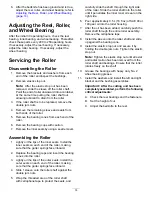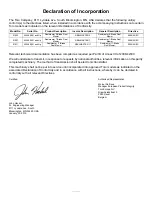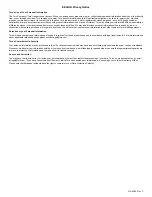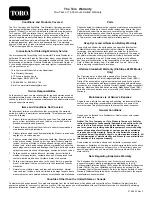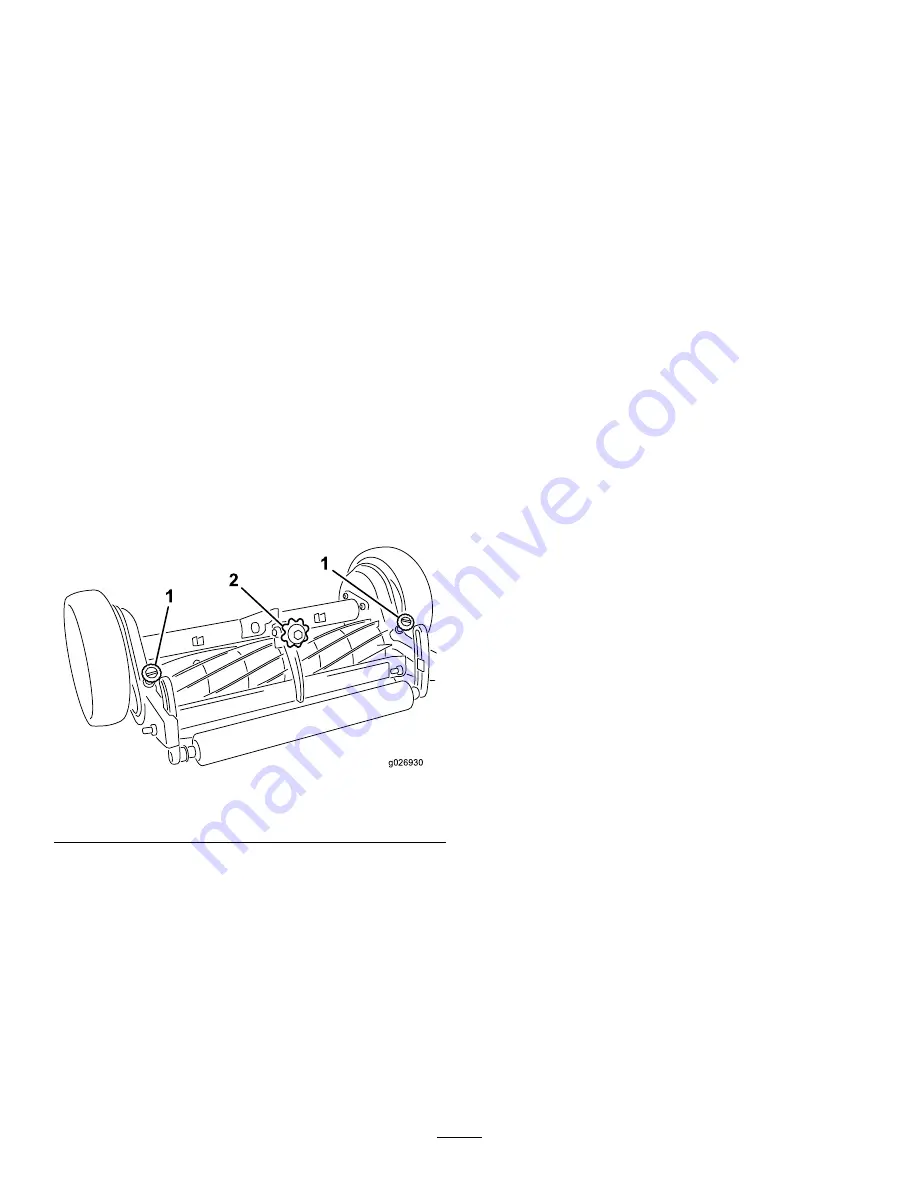
Operation
Note:
Determine the left and right sides of the
machine from the normal operating position.
Adjusting the Bedknife to
the Reel for Light Contact
Important:
After the cutting unit is set up and
installed on the towing frame, the bedknife and
reel must be adjusted for light contact. Adjust
the bedknife to the reel while the cutting unit
is sitting on the grass to be cut because the
force of turf against underside of bedknife during
actual operation must be duplicated to ensure the
correct setting. To ensure sharp cutting edges,
the bedknife and reel must have light contact.
1.
Stand behind the cutting unit.
2.
Disengage the reel throwout knobs (
).
Carefully spin the reel backward to ensure free
movement.
3.
While spinning the reel backward, rotate the
bedknife adjusting knob counterclockwise
(
) until the bedknife does not touch the
reel blades.
g026930
Figure 4
1.
Throwout knobs
2.
Bedknife adjusting knob
4.
While spinning the reel backward, rotate the
adjusting knob clockwise (
), one click
at a time, until light contact of the bedknife and
the reel is noticed or a whispering cutting sound
is heard.
Note:
The spring arm (clicker) may be adjusted
for positive detent by loosening the capscrews
securing the spring arm to the adjustment arm
retainer, adjust until a solid clicking sound is
achieved when the adjusting knob is turned, and
retighten the capscrews.
5.
Check the reel “carry over” by spinning the reel
backward again. The reel should rotate one
to two complete revolutions. Less than one
revolution indicates heavy contact, which means
the bedknife and reel must be readjusted for
light contact; refer to steps 1, 3, and 4.
6.
At the beginning of the cutting day, when the
reels are cold, engage the reel throwout knobs
(
). Operate the cutting units for 15 to
20 minutes so that the bedknife and reel reach
normal operating temperature; then stop the
operation. Next, disengage the reel throwout
knobs and spin the reel backward. A whispering
sound, not clicking, should be emitted, and this
assures the correct adjustment. If a whispering
sound is not heard, the bedknife and reel must
be readjusted; refer to steps 3–5. By contrast,
when the reels are warm from being used, use
only steps 1–5 to maintain light contact between
the bedknife and the reel.
Important:
Never adjust the bedknife to the
reel for light contact if the cutting units are
cold because the increase in temperature
during operation could cause the metal to
expand and result in heavy contact. Heavy
contact causes uneven bedknife wear and
poor quality of cut. However, light contact
between the bedknife and the reel, which is
desirable, minimizes the wear and keeps the
cutting edges sharp. Adjust for light contact
every four hours or sooner, even though
quality of cut is acceptable. When cutting
units are operated in sparse grass or the
temperature of the air is high, the adjustment
for light contact must be checked even more
frequently to avoid heavy contact between
the bedknife and reel. If cutting units are not
operated for a short time, one hour after any
use, check for light contact after resuming
operation for 15 to 20 minutes; refer to steps
1–6.
Adjusting the Bedknife to
the Reel
1.
Position the cutting unit on a level surface.
Remove any paint and grease from the bedknife
and the reel cutting edges.
2.
Make sure that the throwout knobs (
are disengaged and the bedknife to reel contact
is removed by turning the bedknife adjustment
knob counterclockwise.
3.
Insert a long strip of newspaper between the
reel blade and the bedknife. While rotating the
reel backward, turn the bedknife adjusting knob
(
) clockwise, one click at a time, until
the paper is pinched lightly, which results in the
6


